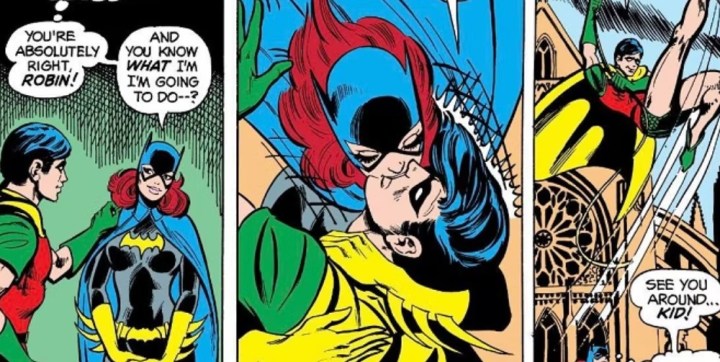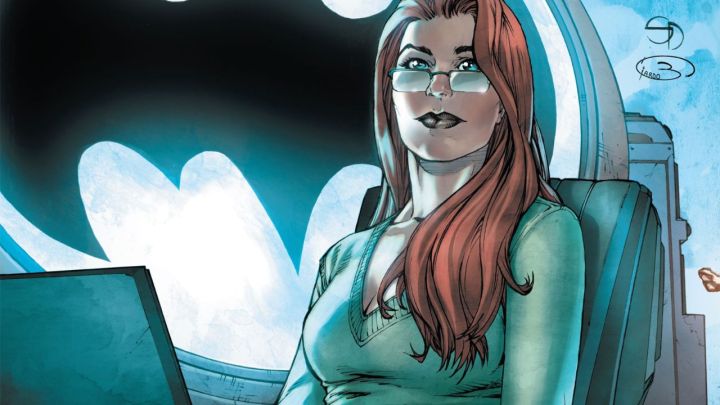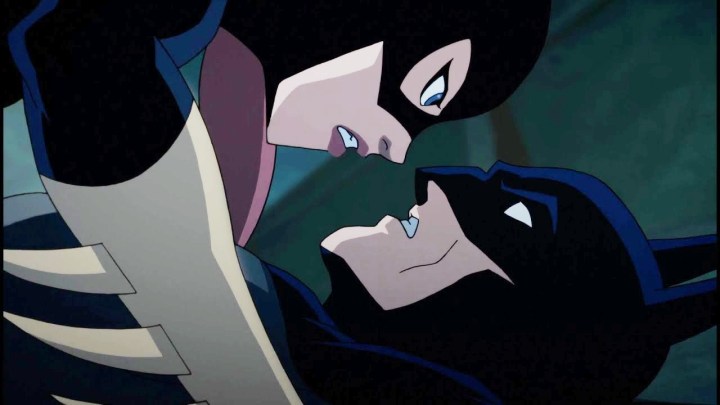It’s not easy being Batgirl.
Introduced in 1967, Barbara Gordon has a rich history in the comics and beyond, acting as a vital member of the Bat Family before growing into her own superhero. For years, Barbara was a significant step forward in representation, acting as the sole female in an otherwise all-male group of vigilantes. After a traumatic accident, she rose from the ashes, becoming arguably the first disabled icon in comic book history.
And yet, she never seems to get the respect she should. Indeed, despite her instant popularity with critics and fans, Batgirl’s journey has been plagued with obstacles and controversies, more than the character deserves. After all, Barbara is an icon, a role model who should receive far better treatment from the DC powers that be.
Batgirl recently made headlines after David Zaslav, the new CEO of Warner Bros. Discovery, scrapped the character’s first solo outing, a project conceived to go straight to HBO Max, for financial reasons. Amid news that HBO Max and Dicovery+ would soon merge into a new and still unnamed project, Batgirl got ruthlessly discarded from Warner’s upcoming plans. The decision was met with outcry from fans and commentators, who condemned Warner’s decision to bury the film.
The worst part is this isn’t the first storm Babs has weathered; in her 55-year-old history, Miss Gordon has found herself at the center of one too many controversies. From controversial comic book decisions to questionable portrayals in animation, Batgirl can’t seem to catch a break.
Here’s to you, Mrs. Robinson Gordon

Barbara’s comic book debut came in the late 60s, a time of sexual experimentation, shifting gender dynamics, and blatant sexism. Her first appearances with Batman and Robin cast her in a somewhat clumsy light; Babs was the embodiment of a “Thank you for participating” trophy. Still, she endured and became a valuable ally to the Dark Knight and the Boy Wonder.
Nowadays, Babs’ relationship with Dick Grayson is canon. The two are currently engaged in a romance on the pages of Tom Taylor’s Nightwing after years of separation following an equally torrid but highly volatile relationship. However, you wouldn’t have imagined their future together during Barbara’s early days as Batgirl because of one major detail: their significant and frankly problematic age gap. Although their ages were never outright stated, it was heavily implied that Barbara was in her early twenties while Dick was still in his teens.
Some may argue that Dick was a mature seventeen, and Barbara couldn’t have been more than twenty-two; the age difference isn’t that pronounced. True. However, their dynamic was much more complicated, considering she acted older than her acted age while he acted younger than his. In the words of a wonderful fictional royal, “it’s not an age gap, but an age chasm.” Robin was still in his youthful and charmingly boyish phase, while Batgirl was a girl in name only. The difference was such that their first kiss — which occurred during a storyline where the duo fought, I kid you not, the ghost of Benedict Arnold — even received a divided response from readers, who questioned its presence, considering the two could never have a real romance.
Babs and Dick’s ages got retconned later so their relationship could happen without the uncomfortable Padmé-Anakin subtext. The plot worked, and Babs finally got to get it on with the Dick Grayson, Nightwing himself, DC’s greatest force for good, owner of the most notorious backside in comics books. Still, controversy was part of Batgirl’s story from the beginning, and while this case didn’t quite reach scandal status, it was the perfect way to signal the trouble ahead.
Enter Batgirl, exit Oracle

Critics and fans widely regard The Killing Joke as one of the best graphic novels in history. Serving as an origin story for the Joker, The Killing Joke offers a fascinating and chilling glimpse into the mind of DC’s most infamous villain. Despite the praise, the story attracted considerable attention for a particular incident in which Joker shoots Barbara, paralyzing her from the waist down. Unable to reassume her role as Batgirl, Barbara took on an advisory role using her intelligence and technological skills; soon, she would become a crucial ally to multiple superheroes outside the Bat Family. Adopting the codename Oracle, Barbara became the leader of the Birds of Prey, offering pivotal assistance and support to the field heroes.
Barbara’s role as Oracle received critical acclaim. Her contributions to the larger DC Universe became invaluable, to the point where she grew into one of its most important heroes. Oracle’s influence translated into the real world, becoming a role model for the disabled community. Here she was, a wheelchair user shaping the future of the DC Universe. Oracle was one of the first disabled superheroes to play a crucial and active role in the medium. For years, she acted as the sole representative of a community that comic books ignored for far too long. Logically, she became more than a hero; Oracle was an icon, the receptacle of many people’s dreams. In an ableist medium that favored peak physicality, Oracle was a breath of fresh air.
Then The New 52 happened, and DC made the controversial decision to “cure” Barbara’s disability via a surgical procedure and rehabilitation, thus allowing her to become Batgirl again. The choice provoked an outcry from critics and fans alike. Why, people questioned, was DC removing the one symbol the disabled community had? Why this insistence on “fixing” a character that did not need a “solution?” The conversation intensified as critics condemned the decision. “Oracle is stronger than Batgirl will ever be,” wrote Jill Pantozzi for Newsarama, mimicking numerous other titles that echoed one same feeling: Why this? Why now?
The response from Dan DiDio, then DC Comics co-publisher, only worsened matters. “We didn’t want to turn our back on the diversity issue, but she’ll always be the most recognizable (Batgirl),” he said at the time. His comment rang insincere and shamelessly greedy; so what if Oracle was a symbol for the disabled community and a positive step forward for representation? It was a matter of name recognition and sales.
The choice to paralyze Barbara was controversial from the start. Alan Moore, The Killing Joke‘s writer, claimed that when he asked DC editor Len Wen if they were on board with the decision, Wen reportedly replied by saying, “Yeah, okay, cripple the bitch.” Barbara was yet another woman fridged in service of a male storyline; however, the incident didn’t break her. On the contrary, Babs rose from the hardship, not by overcoming it but by conquering it. She adapted to her new lifestyle and thrived in her position. All that hard work went to waste when DC treated her condition as an obstacle to be overcome, a nuisance to get rid of to sell more comics.
Once again, Babs was a tool, a means to an end; she took one for the team. Eleven years later, not much has changed.
The remains of the Gail

Batgirl‘s new run would have writer Gail Simone as the lead writer. Already a veteran in the company, Simone was at one point leading the Birds of Prey writing team. The writer bravely took on the controversy for Barbara’s return to the Batgirl role, explaining that while she cherished her time with Oracle, she was equally excited to explore Babs as Batgirl. Simone’s Batgirl run received an overwhelmingly positive reception from readers. Her debut issue sold out at distribution level with over 100,000 copies in its first run. The series remained amidst the Top 30 throughout its run, receiving praise for its darker tone and exploration of Barbara’s trauma. Simone legitimized a purely commercial decision, dignifying it through her words and storylines. Despite the outcry, Batgirl seemed to be moving past the Oracle controversy and into new territory.
And then Simone got fired. In late 2012, Simone took to Twitter to announce Batgirl‘s new editor, Brian Cunningham, let her go over email. Yes, sweet and innocent reader, email. Simone further revealed she had already written several issues that would go unused. A complete Batgirl-related body of work abruptly discarded because of a sudden change in direction. Sound familiar?
Fan reaction was swift and effective. The outcry was such that Simone returned to her previous role merely days after her original tweet went viral. The truth is, DC couldn’t afford any more female-centric scandals at the time. A year before, DiDio became entangled in controversy following the “Hire more women” incident at the 2011 San Diego Comic-Con — this particular story is equally fascinating, although best left for another think piece. Beyond that, Simone was a genuinely great writer. She understood Barbara and delved deeper into the complexities of her character than ever before. It was Simone who introduced Alysia Yeoh, the first transgender character in a contemporary context in mainstream comics.
Funnily enough, Alysia was going to make her live-action debut in 2022’s Batgirl before the film got axed. Life has a funny way of repeating itself. And by funny, I don’t mean funny-ha-ha, but funny PUGH!
The killing choice

The Killing Joke made its way into animation with the 2016 film of the same name. Directed by Sam Liu and written by Brian Azzarello, the film features the return of Kevin Conroy and Mark Hamill to voice Batman and Joker, while Tara Strong takes on the role of Batgirl. While a fairly loyal adaptation, The Killing Joke significantly deviated from its source material with one crucial and questionable scene in the prologue where Batgirl and Batman have sex after a physical confrontation.
Why the change happened in the first place remains a matter of debate. During a panel following the film’s premiere at the 2016 San Diego Comic-Con, Azzarello claimed that the source material was “controversial, so (they) added more controversy.” His comments led to a heated exchange where Bleeding Cool’s Jeremy Konrad called out the decision before walking away from the mic. Azzarello then challenged him to repeat himself before calling him a “pussy,” a choice he later defended via Twitter. During the panel, producer Bruce Timm claimed that, despite realizing the change was “a little risky,” they wanted to show that Batgirl and Batman “made some pretty big mistakes.” He went on to talk about Bruce Wayne’s “parental skills,” comparing Barbara to a kid and saying, “if you tell a kid not to do something, they’re going to want to do it even more.”
In hindsight, Timm’s comments are almost as problematic as the choice itself because they prove that the team behind the film was perfectly aware of the connection between both characters. Bruce Wayne might not be a father figure to Barbara Gordon in the same way he is to Dick Grayson — indeed, Barbara has a loving and healthy relationship with her actual father, Jim Gordon. However, there is an established bond between the two that goes past the regular mentor-mentee connection; Bruce and Barbara are family. In many ways, their rooftop affair was borderline incest.
As expected, the decision and future explanations made no sense, and fans loudly complained about the sex scene. The Killing Joke always had an element of sexual violence as part of its plot, in the form of naked pictures of an injured Barbara that Joker uses to taunt Jim Gordon; its inclusion has been a matter of debate since the graphic novel came out. Moore has all but stopped discussing The Killing Joke, but he remained critical of it throughout the years, as did so many others who wondered why Batgirl needed to be tortured for Jim and Bruce’s reputations to shine even more. Having Barbara enter a sexual relationship with a father figure who held significant power over her added another unfortunate layer to a story already filled with them.
Worsening matters were the justifications for the act. Azzarello, Timm, and everyone on the behind-the-scenes team claimed that Barbara was “stronger” after the incidents. Many famous and critically acclaimed projects treat sexual violence as one more step in a heroine’s journey to success, one more obstacle to overcome and learn from, gaining experience from the ordeal. But what message does that send, that a woman must endure physical and emotional violence to earn her place as a hero? What’s the takeaway from that? The Killing Joke followed the same pattern of “overcoming” sexual violence and got away with it. Because that’s what The Killing Joke comes down to, after all these years, right? Controversy. It’s not about the story or Batman, Gordon, or even Joker himself. It’s all about controversy.
The $90 million dollar shelving of Batgirl

Batgirl‘s much-discussed, much-condemned cancellation brought Barbara Gordon back into the eye of the hurricane. Her movie — the first time she would find herself in the live-action spotlight — got suddenly axed in the most public and embarrassing way possible. Never mind that it would be one of the first superhero films to cast a Latina lead or that it featured the return of Michael Keaton and the introduction of Brendan Fraser into the DCEU. In the eyes of the studio, Batgirl was nothing but a tax write-off, an easy way to make money at the expense of hundreds of creatives who devoted a year of their lives to a movie that will now never be seen.
Against her will and through no fault of her own, Barbara is once again the sacrificial lamb offered to appease the honchos in charge of her story. But why do we keep treating Barbara Gordon like a tool to be used and discarded depending on the circumstance? Why is she still mistreated by everyone around her, including those who are supposed to look after her? During his most recent investor call, David Zaslav defended canceling Batgirl by saying his job is to “protect the DC brand.” Doesn’t that include Batgirl?
55 years after her debut, WB/DC still treats Barbara Gordon like Batman and Robin did back in her first appearance: as an afterthought. Far from it, Barbara is an icon of DC Comics, a character who evolved and endured while others stayed still and stagnated. Her story is the ultimate example of resilience and strength, especially considering the powers that be keep kicking her when she’s down. But just because Barbara gets up every time doesn’t mean it’s okay to kick her again. At what point is it enough?
It’s not easy being Batgirl, and while the recent shelving of her first live-action movie was terrible, it’s not really that surprising given her past treatment. Zaslav was wrong to cancel the Batgirl film, but he’s just following the blueprint DC Comics and Warner Bros. have set for the character for decades. Despite her enormous popularity with comic book fans and gamers (she’s been a popular character in the Batman Arkham games), she’s always been treated like rubbish by the corporate overlords who own her. With the recent backlash in the wake of Batgirl‘s cancellation, maybe now is the time, after so many controversies and misuses of the character over the years, Warner Bros. Discovery give the respect and proper showcase Barbara Gordon deserves.




